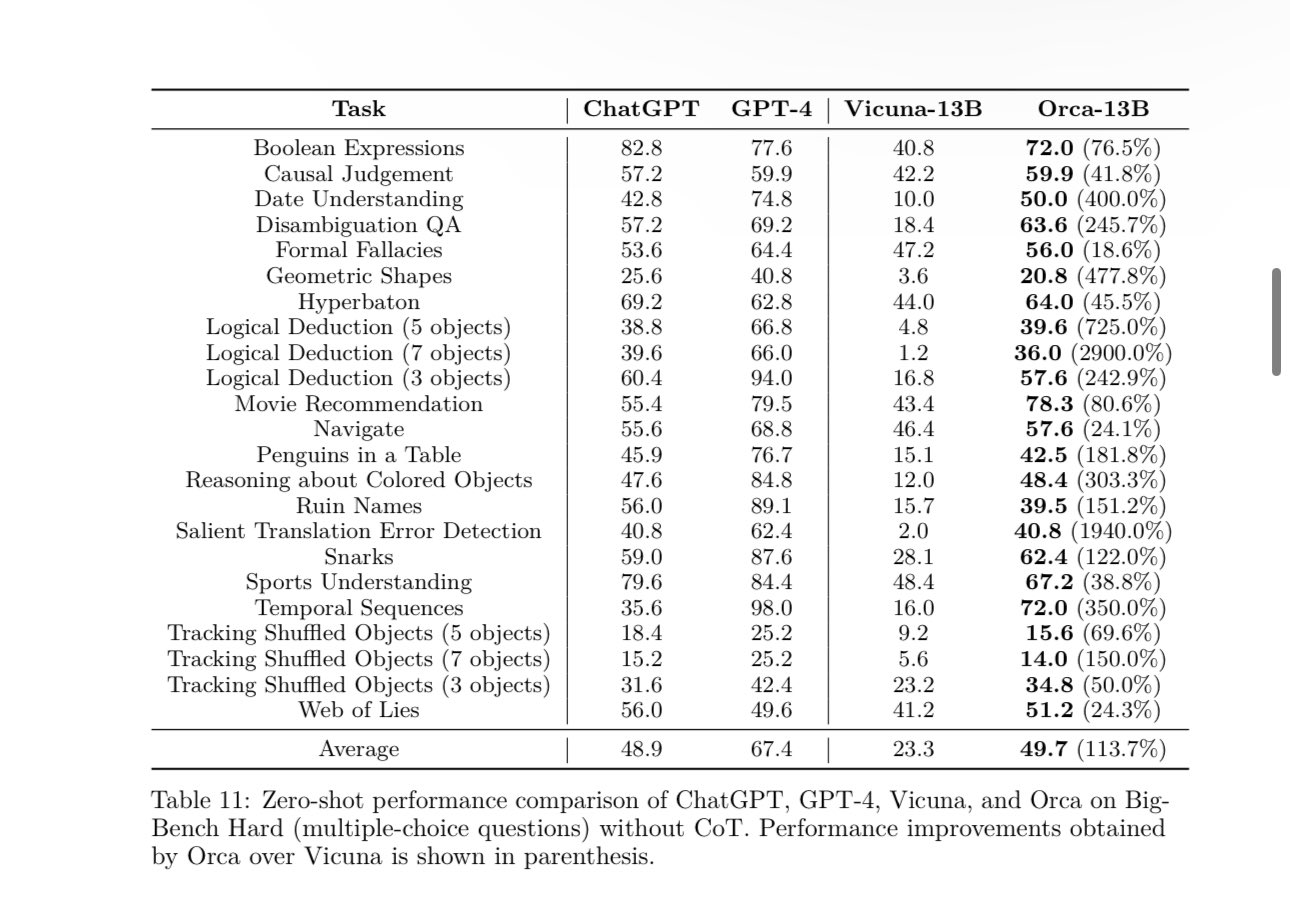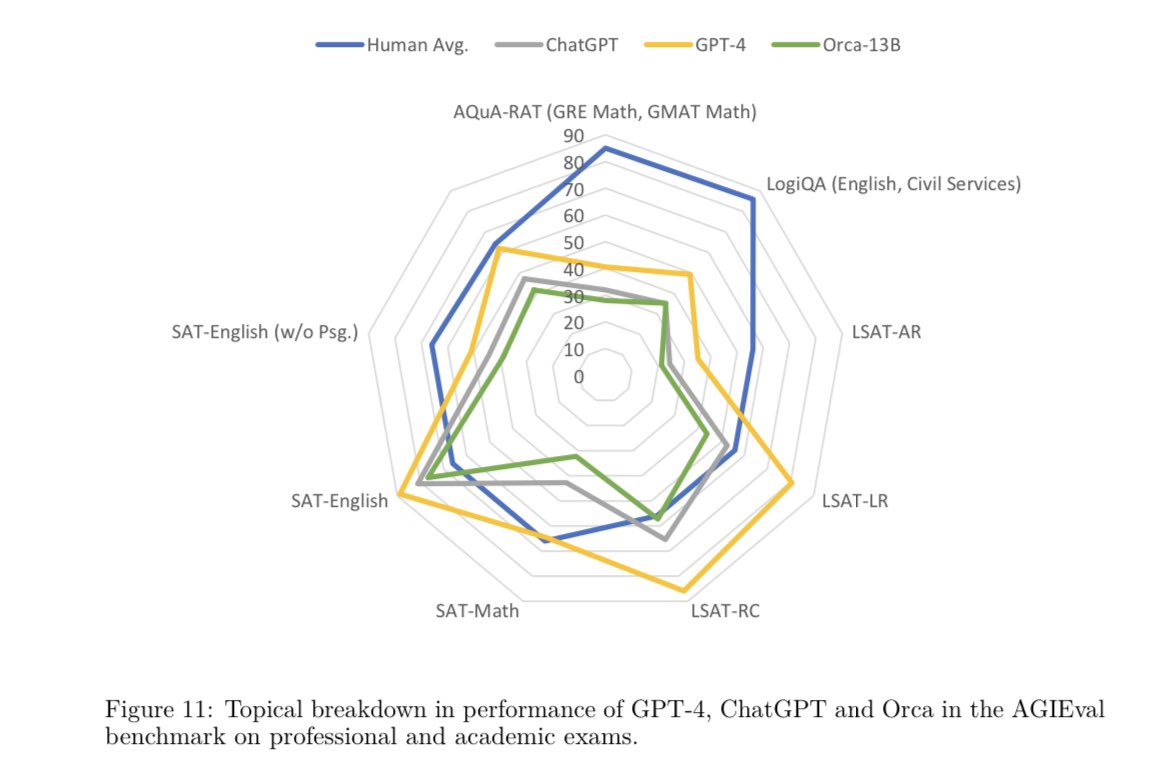Orca 13B: the New Open Source Rival for GPT-4 from Microsoft
Updated on
In the rapidly evolving world of artificial intelligence, it's not always the biggest that make the most noise. Enter Orca 13B, a small yet mighty AI model developed by Microsoft that's making waves in the AI community. Despite its size, Orca 13B is proving that it can stand toe-to-toe with the giants, demonstrating capabilities that rival even the larger foundation models (LFMs) like ChatGPT and GPT-4.
This article delves into the fascinating world of Orca 13B, exploring its unique features, impressive performance, and the potential it holds for the future of AI. From its progressive learning approach to its remarkable performance in various benchmarks, we'll uncover how Orca 13B is redefining what's possible in AI. Whether you're an AI enthusiast, a researcher, or just curious about the latest developments in AI, this comprehensive guide to Orca 13B is sure to pique your interest.
What Powers Orca 13B: Progressive Learning
Orca 13B's progressive learning approach is a cornerstone of its success. By learning from rich signals from GPT-4, including explanation traces, step-by-step thought processes, and other complex instructions, Orca is able to develop a deeper understanding of the reasoning process. This is a significant departure from traditional AI models, which often focus on imitating the style of LFMs but fail to capture their reasoning process.
The use of explanation traces, for instance, allows Orca to understand the underlying logic behind the responses generated by GPT-4. This not only enhances Orca's ability to generate accurate responses, but also enables it to understand the context and nuances of different scenarios, thereby improving its overall performance.
Furthermore, the role of ChatGPT as a teacher assistant is crucial in providing a supportive learning environment for Orca. By providing guidance and feedback, ChatGPT helps Orca refine its learning process and improve its understanding of complex instructions. This teacher-student dynamic is a key factor in Orca's ability to imitate the reasoning process of LFMs.
Orca 13B's Performance in Benchmarks
Orca's performance in various benchmarks is a testament to its capabilities. In complex zero-shot reasoning benchmarks like Big-Bench Hard (BBH) and AGIEval, Orca surpasses conventional state-of-the-art instruction-tuned models such as Vicuna-13B by more than 100% and 42% respectively. This is a significant achievement, considering that these benchmarks are designed to test the model's ability to reason and make decisions in complex scenarios.

Moreover, Orca reaches parity with ChatGPT on the BBH benchmark, which is a remarkable feat given the size difference between the two models. This demonstrates Orca's ability to compete with larger models in terms of performance, despite its smaller size.
Orca also shows competitive performance in professional and academic examinations like the SAT, LSAT, GRE, and GMAT. This is particularly impressive as these examinations are designed to test a wide range of skills, including critical thinking, problem-solving, and analytical reasoning. The fact that Orca is able to perform at a competitive level in these examinations is a clear indication of its advanced capabilities.

You can learn more technical details from the original Orca 13B Paper (opens in a new tab).
Orca 13B: Smaller Size than ChatGPT
One of the most remarkable aspects of Orca is its size. Despite being a smaller AI model compared to giants like ChatGPT, Orca manages to perform at the same level. This is a significant breakthrough in technology as it demonstrates that powerful AI models can be built by smaller teams, making AI development more accessible.
The size of Orca also has implications for its efficiency and scalability. Being a smaller model, Orca requires less computational resources to train and operate, making it a more sustainable and cost-effective solution for AI development. Furthermore, its smaller size makes it easier to scale and adapt to different applications, thereby increasing its versatility and utility.
Orca 13B: An Open Source Triumph?
Microsoft's decision to open source Orca 13B in the coming months is a significant development in the AI community. This will allow users to dissect Orca, learn how to develop and train their own models, and even enhance Orca with their own input and ideas. The open sourcing of Orca is a reflection of Microsoft's commitment to AI and its belief in the potential of AI to transform technology.
By making Orca open source, Microsoft is not only promoting transparency and collaboration in the AI community, but also empowering individuals and smaller teams to contribute to the development of AI. This is a significant step towards democratizing AI and making it more accessible to a wider audience.
Furthermore, the open sourcing of Orca will provide valuable insights into the workings of a successful AI model. By studying Orca, users can gain a deeper understanding of the strategies and techniques used in its development, which can be applied to their own AI projects. This will not only enhance the quality of AI models developed by the community, but also accelerate the pace of innovation in the field of AI.
The open sourcing of Orca also presents an opportunity for users to enhance Orca with their own input and ideas. By allowing users to contribute to Orca's development, Microsoft is fostering a collaborative environment where the collective intelligence of the community can be harnessed to improve Orca and push the boundaries of what is possible in AI.
Potential Use Cases and Applications for Orca 13B
As we delve deeper into the capabilities of Orca 13B, it becomes clear that this AI model is not just a technological marvel, but also a tool with immense potential for practical applications. From academic research to business analytics, the possibilities are endless.
Orca 13B in Academic Research
In the realm of academic research, Orca 13B can be a game-changer. Its ability to imitate the reasoning process of LFMs makes it an invaluable tool for researchers. For instance, in the field of social sciences, Orca can be used to analyze complex social phenomena and generate insightful explanations. Similarly, in the field of natural sciences, Orca can assist researchers in understanding complex natural processes by providing step-by-step explanations of these processes.
Orca 13B in Business Analytics
In the business world, Orca 13B can revolutionize the way companies analyze their data. By leveraging Orca's reasoning capabilities, businesses can gain deeper insights into their operations and make more informed decisions. For example, Orca can be used to analyze customer behavior patterns and provide detailed explanations of these patterns, enabling businesses to better understand their customers and tailor their services accordingly.
The Future of AI with Orca 13B
The future of AI looks promising with models like Orca 13B. By making Orca open source, Microsoft is not only promoting transparency and collaboration in the AI community, but also empowering individuals and smaller teams to contribute to the development of AI. This democratization of AI is a significant step towards harnessing the collective intelligence of the community to push the boundaries of AI.
As we continue to explore the potential of AI, models like Orca 13B will play a crucial role in shaping the future of this exciting field. Whether it's in academic research, business analytics, or any other field, the possibilities with Orca 13B are endless.
Conclusion
Orca 13B is a powerful AI model that demonstrates the potential of smaller models to rival the giants. Through its progressive learning approach, it has managed to imitate the reasoning process of LFMs, thereby enhancing its capabilities and skills. Its performance in various benchmarks is a testament to its capabilities, and its smaller size makes it a more accessible and sustainable solution for AI development.
The future of Orca looks promising, with Microsoft planning to open source the model in the coming months. This will not only provide valuable insights into the workings of a successful AI model, but also empower individuals and smaller teams to contribute to the development of AI. As we continue to explore the potential of AI, models like Orca 13B will play a crucial role in shaping the future of this exciting field.
Frequently Asked Questions
Throughout this article, we've explored the capabilities and potential of Orca 13B. However, you may still have some questions. Here are some frequently asked questions about Orca 13B:
What is the significance of Orca 13B's size?
Orca 13B is a smaller AI model compared to giants like ChatGPT, yet it manages to perform at the same level. This is a significant breakthrough in technology as it demonstrates that powerful AI models can be built by smaller teams, making AI development more accessible.
How does Orca 13B learn?
Orca 13B learns from rich signals from GPT-4, including explanation traces, step-by-step thought processes, and other complex instructions. This learning process is guided by teacher assistance from ChatGPT, which provides a supportive learning environment for Orca.
What is the future of Orca 13B?
Microsoft plans to open source Orca 13B in the coming months. This will allow users to dissect Orca, learn how to develop and train their own models, and even enhance Orca with their own input and ideas.